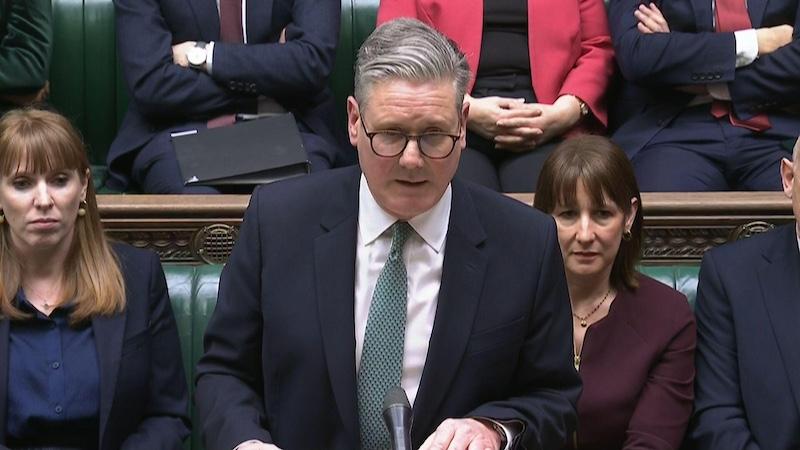NATO's 2% Defense Spending Target: Current Status And Future Outlook

Table of Contents
The 2% Target: Origin and Significance
The 2% of GDP target for defense spending wasn't a sudden imposition; it evolved over time. Initially suggested in the wake of the 2008 Bucharest Summit, it gained significant traction in the years following the Russian annexation of Crimea in 2014. The strategic rationale behind the 2% goal is multifaceted. It aims to ensure that NATO members contribute adequately to collective defense, fostering a sense of shared responsibility and burden-sharing. Meeting this target is not merely a financial commitment; it carries significant political weight. Failure to meet the 2% defense spending goal can be interpreted as a lack of commitment to collective security, potentially undermining the alliance's credibility and influence on the global stage.
- Increased collective defense capabilities: Adequate funding allows for modernization of military equipment, improved training, and enhanced readiness.
- Deterrence against potential adversaries: A strong collective defense posture, underpinned by sufficient spending, serves as a deterrent against aggression.
- Enhanced burden-sharing among allies: The 2% target promotes fairer distribution of the costs associated with maintaining collective security.
- Maintaining credibility and influence within the international community: Meeting the target demonstrates a commitment to international security and strengthens NATO's global standing.
Current Status of NATO Members' Defense Spending
The current picture of NATO members' defense spending is varied. While some nations significantly exceed the 2% target, others fall considerably short. Analyzing the data reveals significant disparities and trends. Countries like the United States, Greece, and Poland consistently exceed the 2% benchmark, often driven by geopolitical considerations and perceived threats. Conversely, countries like Canada, Germany, and Luxembourg have struggled to reach the target, often citing economic constraints or competing domestic priorities. The overall trend shows a gradual increase in defense spending across many NATO members since 2014, however, the pace of growth varies considerably. Furthermore, there are geographical variations; Eastern European members facing direct security threats tend to dedicate a larger portion of their GDP to defense compared to their Western counterparts.
- Examples of high-spending nations: The US, Greece, and Poland consistently dedicate a substantial portion of their GDP to defense, reflecting their strategic priorities and regional security concerns.
- Examples of low-spending nations: Canada, Germany, and Luxembourg, despite their economic strength, face challenges in reaching the 2% target, often due to competing budgetary pressures.
- Analysis of the overall trend: While the overall trend shows an increase in defense spending across NATO, reaching the 2% goal remains a challenge for many members.
- Geographical variations in spending levels: Eastern European nations often demonstrate higher spending levels than Western European countries, due to their proximity to potential threats.
Challenges and Obstacles to Achieving the 2% Target
Several significant hurdles impede the attainment of the 2% defense spending target for many NATO members. Economic constraints, particularly in the wake of economic downturns, often force governments to prioritize essential public services over defense spending. Domestic political priorities also play a significant role. Public support for increased military spending can be tenuous, particularly when competing demands exist for healthcare, education, and social welfare programs.
- Economic downturns and their effect on defense budgets: Recessions often lead to austerity measures, impacting defense spending as governments prioritize other areas.
- Public opinion and support for increased military spending: Public opinion can be a critical factor, influencing government decisions regarding defense budgets.
- Competition for resources with other government sectors (healthcare, education): Defense spending often competes with other crucial sectors for limited government resources.
- Technological advancements and their impact on defense costs: The increasing cost of advanced weaponry and technology presents another challenge.
Future Outlook and Potential Adjustments to the 2% Target
Predicting whether NATO members will meet the 2% target consistently in the coming years is challenging. However, several factors suggest potential adjustments or modifications to the current framework. Alternative metrics, such as evaluating military readiness based on factors beyond simple GDP percentage, could provide a more nuanced assessment of defense capabilities. Furthermore, reforming the current burden-sharing framework to accommodate varying economic capacities and security challenges may be necessary. The emergence of new threats, technological advancements, and geopolitical shifts will undoubtedly influence future defense spending needs and reshape the debate around the 2% goal.
- Predictions for future defense spending based on current trends: Based on current trends, some nations are expected to increase defense spending, while others may continue to struggle to reach the 2% target.
- Discussion of alternative measures for evaluating military readiness: Shifting focus from the pure GDP percentage to qualitative measures of military readiness might offer a more comprehensive assessment.
- Potential reforms to the current framework for burden-sharing: A revised framework that accounts for varying economic capabilities and security contexts might enhance fairness and effectiveness.
- The role of innovation and technology in shaping future defense budgets: Technological advancements and their associated costs will significantly impact the allocation of defense budgets in the future.
Conclusion
The current status of NATO's 2% defense spending target reveals a complex picture of adherence, with significant disparities among member states. Economic constraints, domestic political priorities, and the evolving nature of security threats all pose significant challenges to achieving this goal. While the 2% target serves as a useful benchmark, alternative measures of military capability and more nuanced approaches to burden-sharing may be necessary to ensure the collective security of the alliance. Understanding the complexities of NATO's 2% defense spending target is crucial for ensuring the future security of the alliance. Continued monitoring and critical discussion surrounding the target, its effectiveness, and potential alternatives are essential for a strong and resilient NATO. The ongoing debate regarding NATO defense spending and the 2% defense spending goal will continue to shape the alliance's future.

Featured Posts
-
 Jawa Timur Dilanda Hujan Petir Peringatan Cuaca 29 Maret 2024
May 28, 2025
Jawa Timur Dilanda Hujan Petir Peringatan Cuaca 29 Maret 2024
May 28, 2025 -
 Update Cuaca Semarang Dan Jawa Tengah Waspada Hujan Siang 22 April
May 28, 2025
Update Cuaca Semarang Dan Jawa Tengah Waspada Hujan Siang 22 April
May 28, 2025 -
 Al Nassr Cristiano Ronaldo Ile 2 Yillik Soezlesme Imzalayacak
May 28, 2025
Al Nassr Cristiano Ronaldo Ile 2 Yillik Soezlesme Imzalayacak
May 28, 2025 -
 Kanyes Wife Bianca Censori Spotted Rollerblading In Italy Latest Stunt Details
May 28, 2025
Kanyes Wife Bianca Censori Spotted Rollerblading In Italy Latest Stunt Details
May 28, 2025 -
 Your Guide To 2025 Arizona Diamondbacks Games Promotions Giveaways At Chase Field
May 28, 2025
Your Guide To 2025 Arizona Diamondbacks Games Promotions Giveaways At Chase Field
May 28, 2025
